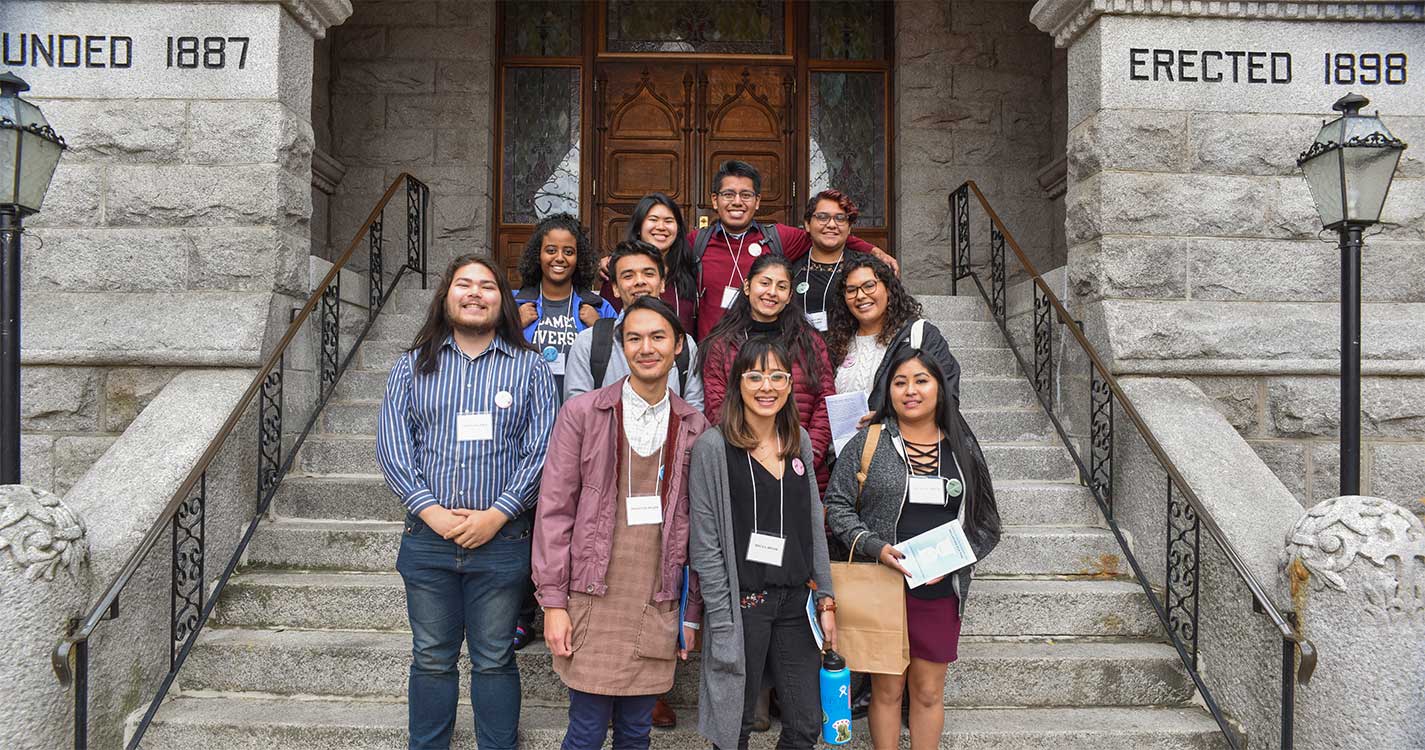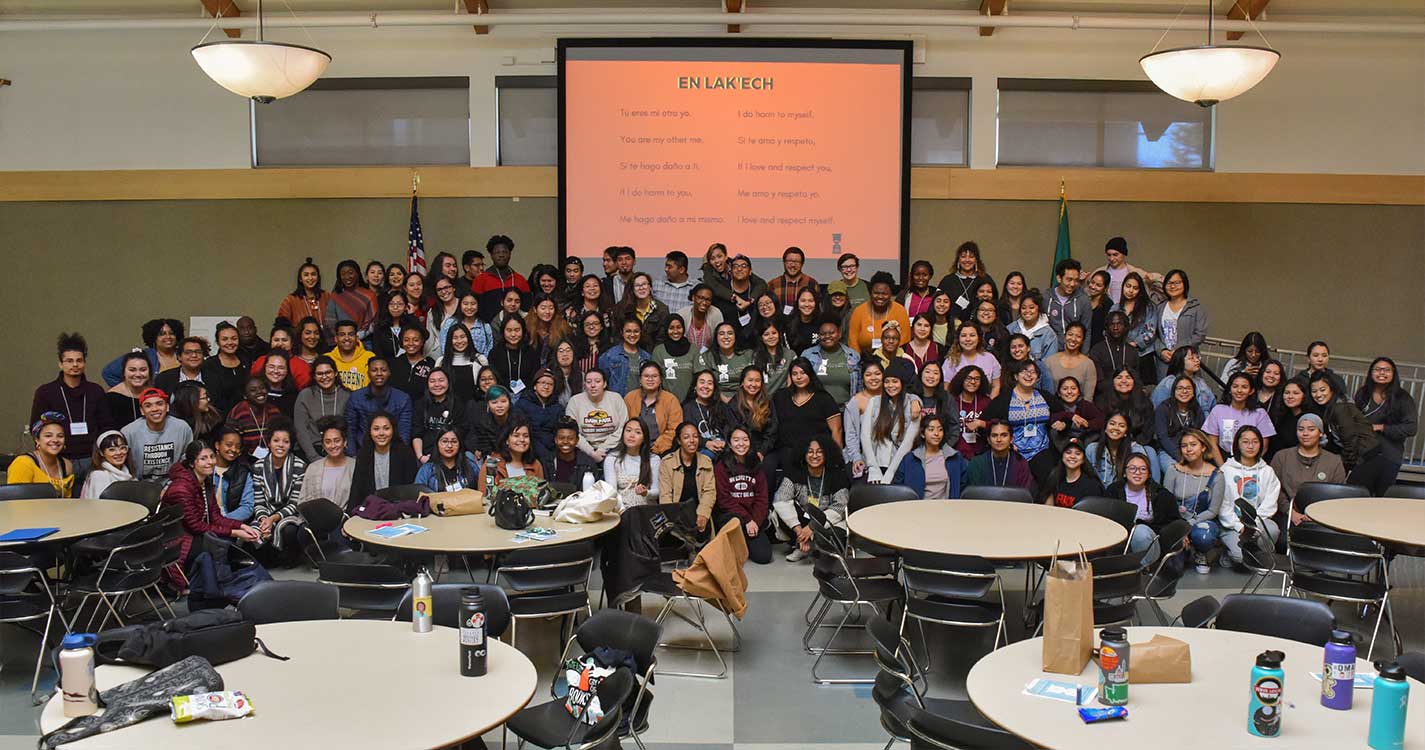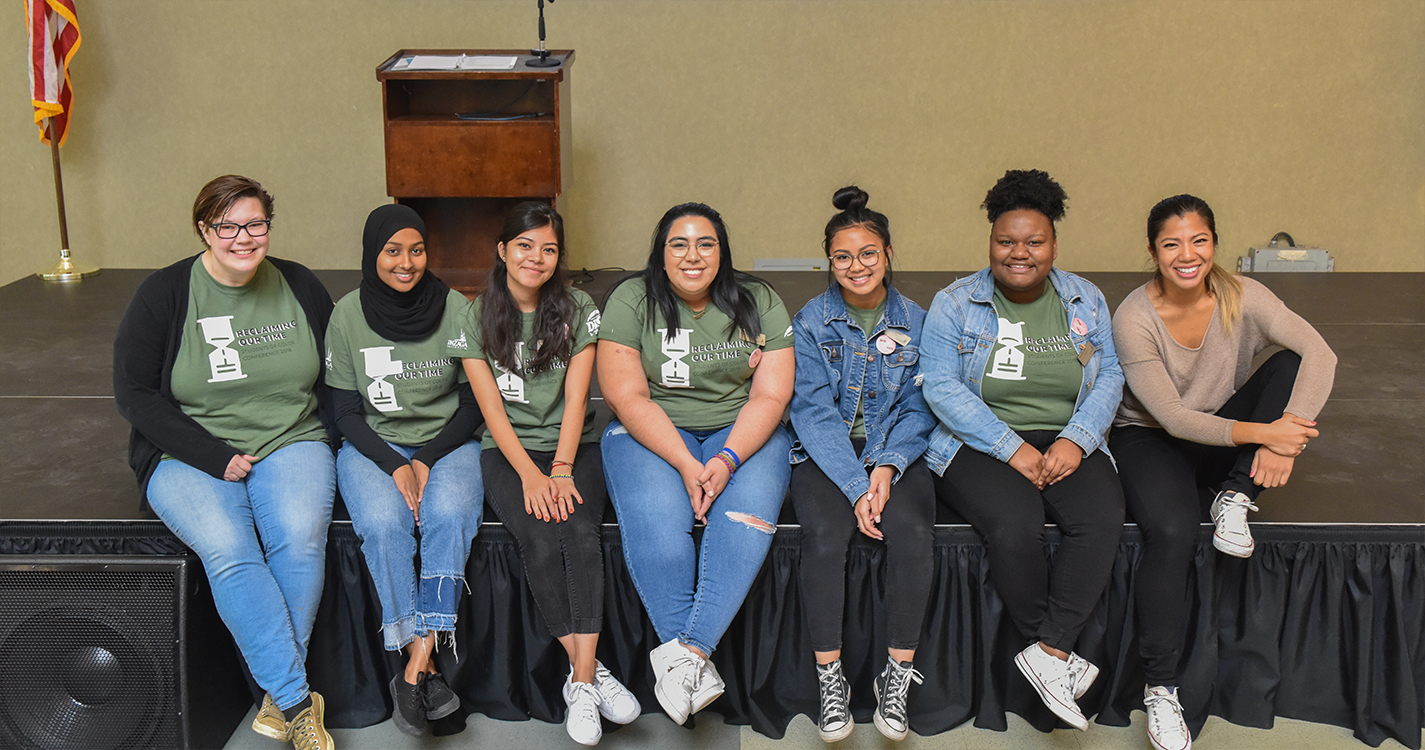“When I look into this crowd, I see myself.”
Phil Tyler, Gonzaga University campus safety officer and former Spokane, Washington NAACP president, said to 200 people of color that filled the conference room. We were gathered at Gonzaga for the opening ceremony of the second annual Pacific Northwest Students of Color Conference.
As I looked around the room, I could see and feel that Tyler had perfectly summarized what we were all feeling — community and support. We were surrounded by people with similar experiences and lives, others with whom we could truly relate.
This feeling of belonging to and being supported by your community isn’t always felt by students of color on college campuses. While forty percent of postsecondary students in the United States identify as students of color (Higher Education Today), the institutional resources available to support these students from diverse backgrounds are often lacking. According to the event brochure, the conference was started last year to “empower students of color to be agents of social change at their predominantly white institutions. Together SOCC wants to create a safe space for students with marginalized identities to come together and speak on their experiences, build community across institutions, and empower one another.” During the two-day conference in October, students of color attended student-led workshops and caucuses, and ate meals in a space made for students of color by students of color.
Before my time at Willamette, I didn’t know that conferences like this existed. That changed last year when I attended the Oregon Students of Color Conference at the University of Oregon with a group from the Office of Multicultural Affairs. That experience opened my eyes to these incredible venues for coalition building and education. When the opportunity arose to attend the conference in Spokane — Willamette University’s Office of Multicultural Affairs and Office of Equity, Diversity and Inclusion subsidized the costs for myself and 12 other students to attend — I took it without hesitation.
I attended the workshops “Assimilation: Necessity or Internalized White Supremacy,” “From Apathy to Action: Make Your Ideas Real” and “Unearthing our Roots: A Lesson on Cultural Capital.” Students shared their stories of surviving and thriving in our predominantly white institutions. These workshops inspired me because finally, I could give a name to the factors that unconsciously influenced our actions and perceptions of others. The most interesting in my mind being cultural capital, a sociological term referring to the cultural norms, traditions and behaviors that we engage in that decide whether or not we’re accepted by or rejected by the society around us. This resulted in my decision to take a sociology course next semester so I can further explore impactful social constructs in my life like cultural capital, imposter syndrome and the model minority myth.
On the last day of the conference, we each attended a caucus of our choosing. I chose the Working Class caucus as I come from a low-income family and it’s necessary for me to not only work during the summer, but during the school year to support myself. During the caucus, students of color shared their stories and found community with others who have to work to ensure that they can continue attending these institutions. We bonded over the fact that we’re first-generation students who are still learning to navigate our universities. We reassured one another that we were not alone in our struggles. Ultimately, we all left that room knowing that if we ever needed someone who would listen and understand our struggles, someone was just a phone call, text or Snapchat message away.
At the closing ceremony, I stopped for some time to take it all in. As I looked around at the crowd, I didn't just see myself. I saw others who experienced situations and struggles similar to my own. Together we recited “En Lak’ech.” The first two lines captured me. “Tú eres mi otro yo. / You are my other me.” Everything felt at peace, for I realized that no matter the distance, we all had each other’s support. In two short days, we fostered a community whose impact on all of us would last a lifetime.




